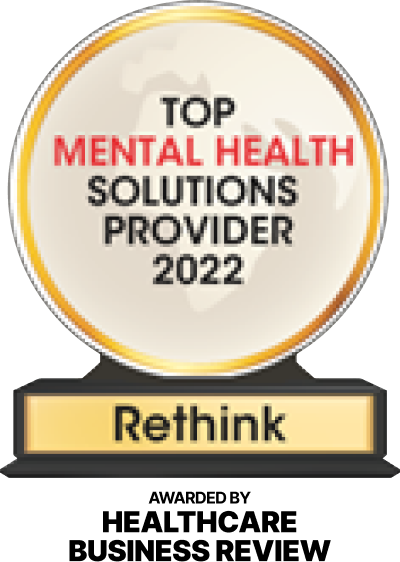Businesses thrive when employees choose to do innovative work in collaborative spaces. This traditional view remains true despite two years of a pandemic-induced disruptions. As the world nears the end of the pandemic, many companies have asked employees to return to the office but find it challenging to manage this transition.
Some leaders have even come up with strategies to entice workers, such as asking them to go in only a few days per week or sometimes permitting them to leave early. However, it may be difficult to enforce these arrangements without first allowing employees to voice the support they need from companies to succeed in their roles.
Even considering employer preference for a return to the office, this article will not build on and add general approaches to bringing employees back. Instead, it will emphasize how collaboration and innovation can happen in virtual spaces and at the same time maintain, if not improve, employee efficacy and wellbeing. Depending on the nature of your work, you may not necessarily need a physical space to do your job, at least most of the time. The era of hybrid, flexible and autonomous arrangements has already arrived, and employers could learn to embrace it—or, at least, see it as a possible way to work better.
With networked and globalized connectivity already in place, the pandemic gave us a new way of working, having flexibility and autonomy. As we settled into this new way, our needs and preferences drove the policy and HR decisions that affected us. While we sought company, team, or one-on-one communication on work expectations, we truly desired to make personalized decisions regarding when and where we work. According to a recent Jabra study with knowledge workers (employees who acquire and apply knowledge to products and services), managers can create work environments comfortable (within operational constraints) by allowing team members to set their own schedules instead of holding standard “9-to-5” working hours.
The same study found that knowledge workers prefer going into the office when required and working from home over having “in office” and “at home” days set for the team each week. However, even when instructed to go into the office for a meeting, it may not be necessary to have everyone in the same building. To illustrate, we went from in-person brainstorming using sticky notes on a board to virtual brainstorming using shared online documents or platforms to curate ideas across perspectives.
Even with this transition, virtual brainstorming produces both a greater quantity and a better quality of outcomes than in-person. A recent article in the Harvard Business Review suggests that virtual brainstorming allows everyone to be heard and express freely what they think and to know the viewpoints of others, avoiding groupthink and its potential consequence on business outcomes.
Many employees who can benefit from virtual brainstorming as opposed to in-person are parents of children with support needs, adults with disabilities, and those most vulnerable to pandemic-related disruptions. A recent Harvard Business School employee survey reports three out of four employees are engaged in caregiving. That responsibility can prevent participation in brainstorming if asked to go into the office, leaving them more likely to be sidelined and not called when opportunities become available. We recommend avoiding the exclusion of caregivers from brainstorming because the one-day event requiring travel and lodging conflicts with their household schedule, forcing them to make trade-offs between career opportunities and family needs.
Studies show that women bear the brunt of caregiving responsibilities at home, so they are most challenged by limited flexibility and autonomy, leading many to leave the workforce or not progress in it. Virtual makes brainstorming sessions more accessible to caregivers by providing the flexibility to coordinate schedules with family members and join from a convenient location. Virtual is also better for adults prone to sensory overload who need brainstorming stretched across multiple touchpoints to take time out of the day to decompress and process information. These examples show that flexibility and autonomy can keep your talent pool happy and intact, increasing retention.
A Gartner survey found that flexibility and autonomy are also critical drivers of increased productivity across all aspects of employment (not just brainstorming). Other benefits include exponential growth in the number of applicants, which can speed up the time to hire and redress the lack of diversity in applicant pools. Hybrid and remote work also boost innovation because they invite new and different perspectives from cultures and ethnicities around the world. While these findings give us insight into flexible and autonomous arrangements, to what extent can we generalize to many workplace situations while sustaining employee engagement and considering operational constraints?
According to Gallup, hybrid and remote workers are more engaged than on-site workers (37% vs. 29%), leading to higher productivity. One answer: It’ll require highly skilled managers who set clear expectations, touch base weekly with their team members, and have accountability for performance outcomes.
10 Other Ways to Design a Workplace for Flexibility, Autonomy, and to Increase Employee Engagement
Here are ten other ways for leaders to design a workplace that emphasizes flexibility and autonomy while increasing employee engagement.
- Create a successful coaching culture for everyone
- Allow business functions (e.g., production, sales, accounting, customer service, etc.) to decide on flexible and autonomous approaches based on what works best for each person and the operation
- Have teams establish criteria in writing (e.g., setting forth a time window for heavy collaboration, leaving the rest of the schedule up to each member to do focused work or perform obligations)
- Decrease productivity monitoring activity when and where you can because such action can increase anxiety and erode trust between employees and leadership
- Rate employee performance based on output achievements and other outcome measures and not on activity or hours devoted (e.g., sales generation as opposed to sales pitches)
- Ensure consistency within salary, recognition, bonuses, project opportunities, and promotion for all employees, and do not display favoritism toward employees who commute to the office
- Encourage managers and peers to have non-business conversations and show an interest in team members, like asking, “What interests you outside of work” or “How is your family?”
- Keep an open mind and actively listen to employees
- Reallocate some spending on real estate and office design to digital tools (e.g., Howspace) and practices (e.g., virtual culture alignment sessions) to ensure hybrid and remote workers can participate in team and company collaboration
- Reallocate some spending on in-office perks and benefits (e.g., gyms) to digital tools that will best serve employees’ efficacy and wellbeing to strike a good balance of perks and benefits to in-office, hybrid, and remote workers
Leadership should create a loose framework that would leave room for bottom-up self-organization, meeting the needs of the managers, teams, and employees in this new way of working. Leadership should also ensure that top-down policies have sufficient flexibility and feedback loops to enable evaluation and modifications as changes continue to emerge in flexible and autonomous work arrangements.
A healthy balance between top-down governance with room for bottom-up self-organization lays the foundation for more successful and modern approaches to our work.
To learn more about the new RethinkCare platform, request a demo.











